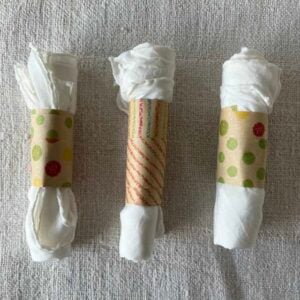For Sunday Visit, Botanical Colors sits down for an interview with a luminary in the natural dye, textile and art world. This week we visit with Monica Medeiros of Bricolage Press. Learn about Monica’s history of print making and how she blends her love of letter press with natural dyes. Grab a cup of tea and settle in to learn about someone you never knew! Catch up on all our Sunday Visits here.

Tell us about your origin story? How did you first find the medium of natural dyes?
I started natural dyeing in earnest when I started gardening and trying to grow my own food. I was lucky enough at the time to live on a property with about a quarter acre and I was experimenting with this idea of urban homesteading. I had planted marigolds everywhere because they are a natural pest deterrent and a great companion plant to tomatoes. They were abundant gorgeous golden orbs throughout, but they also needed near constant deadheading. Having so many, I set out to find something to do with them, and that’s when I learned that I could create a natural dye vat with them. I fell in love with the distinct rich golden color that resulted and from there my natural dye journey began.
I love the ethos behind your moniker “Bricolage” – can you elaborate on tinkering & how improvisation plays a role in your practice?
My choice of “Bricolage” really started with my letterpress practice, as it very much requires one to be creative with what one has. Often times when hand setting type, one might run out of a certain letter and need to improvise by incorporating a different typeface or turning a W into an M. As my craft practices grew and became numerous, I found that this idea of improvisation seemed to resonate with each process. In general I think that it leads me to let go of expectations, which I find to be a necessary step to creating, especially with something like natural dyes. Staying true to this is also the idea of dyeing with what you have in season. I’d love to dye with summer flowers all year long but of course that isn’t realistic, even here in temperate California. Dyeing in winter really started to push my boundaries and open me up to a new world of color.

Do you have a preferred practice within the context of natural dyes? Can you also tell us a little bit about your press?
I’ve been partial to eco-printing because of my print background. I started letterpress printing at sixteen, having watched my mom for years on her press. I ended up perusing a fine art and book arts degree and spent many years studying photography as well, all different forms of creating a print. I got my own press at eighteen and began what has now been over fifteen years of collecting equipment, some of which dates back to the 1860s. When I learned of the eco-printing process it solidified my natural dye obsession as it seemed like the perfect way to marry my love of natural dyes and flowers with my love of printmaking. Both letterpress printing and natural dyeing have such deep and fascinating history as well, which I think is another reason I find them so captivating.

Workshops are a big part of your practice, why?
I love workshops because I love to share these processes with others. With natural dyeing in particular, I love to open people’s eyes up to this secret world of color that surrounds us. It also never ceases to amaze me how ten people can come together and each are given the same exact materials and each person has their own vision and creation at the end of the day. It is always so interesting to see how different perspectives and styles manifest themselves.
What advice would you give little Monica?
In conversation with many people I feel like this idea keeps coming up that we are coming full circle and that the path we thought we would take maybe in our teens or twenties is not at all what we really want, and we find ourselves going back to ideas that we had when we were much much younger. So my advice to little me would be to always hold onto my little dreams and pursue them even if they maybe seem a little naive or unrealistic- always hold onto them and find a way to incorporate them into adulthood.

If you didn’t work with natural dyes, what would you be doing?
I’d like to think I would still be working with flowers, maybe as a florist.
Last song on your playlist?
Roads by Jess Williamson






